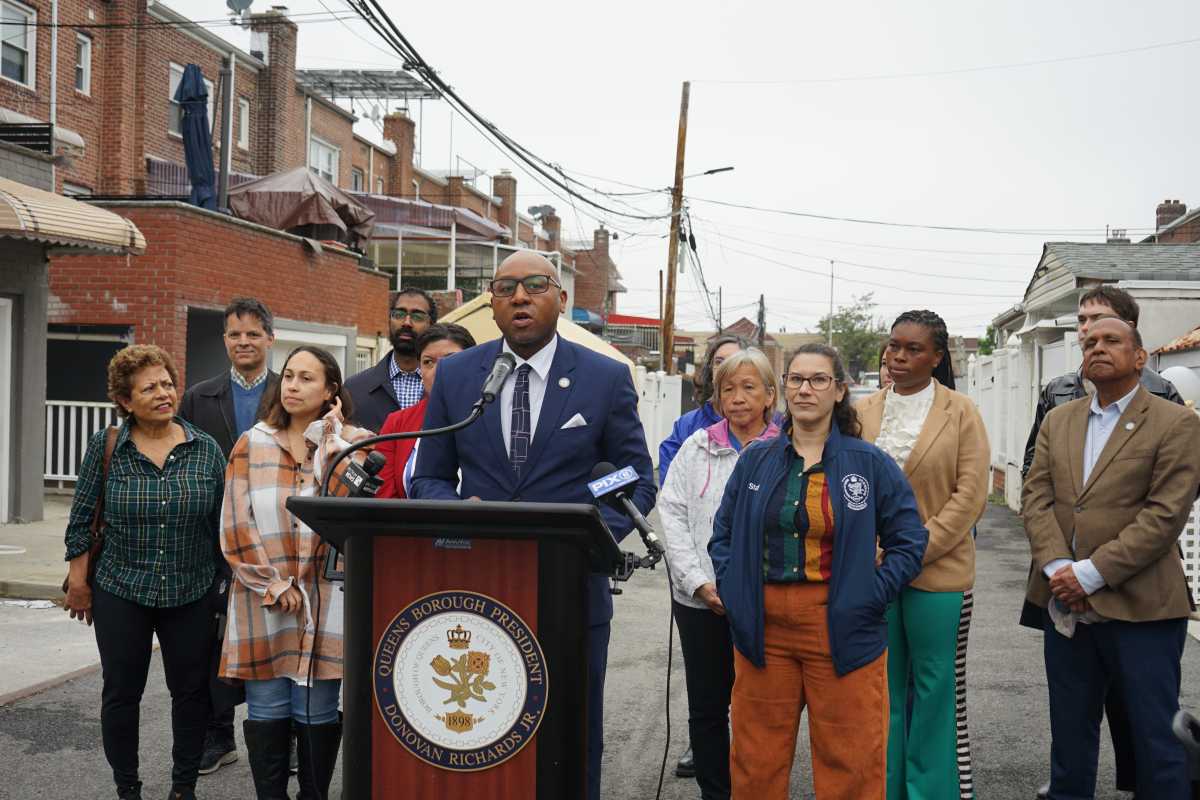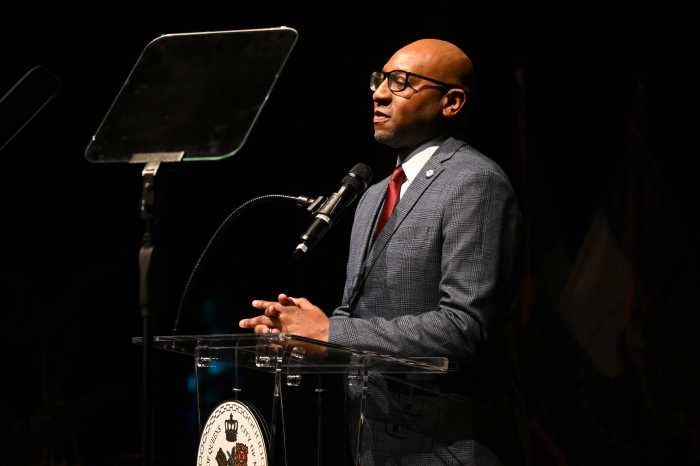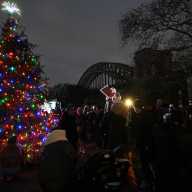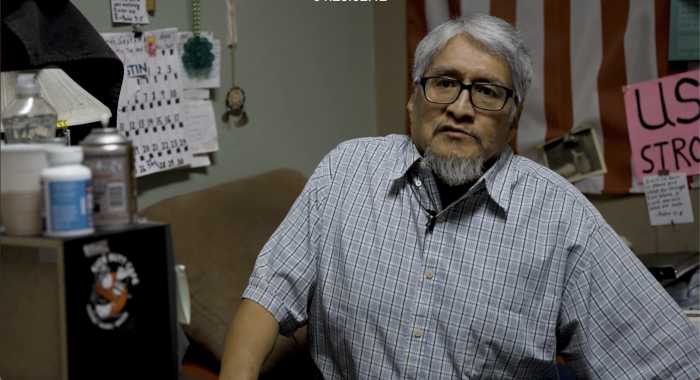Queens Borough President Donovan Richards on Monday released the borough’s third-annual resiliency report, highlighting ongoing efforts to make Queens a “cleaner, greener” borough, while sharply criticizing the Trump Administration for slashing nearly $150 million in federal funding for local flood mitigation projects.
The report’s release coincided with a morning rally in East Elmhurst, where Richards called on former President Donald Trump to immediately restore funding for three climate resiliency projects in Elmhurst, Corona and Flushing that were defunded under FEMA’s recently terminated BRIC (Building Resilient Infrastructure and Communities) program.
Speaking from a shared driveway off Astoria Boulevard between 87th and 88th Streets, Richards demanded the return of $50 million for a cloudburst mitigation project in Elmhurst, $47 million for a similar project in Corona, and $46.6 million in Flushing.
“Of all the things the Trump Administration is anti, being anti-environment might be its calling card,” Richards said. “From believing climate change is a hoax to clawing back nearly $150 million in badly-needed funding for flood relief in Queens, Washington’s anti-environment stance will have life-or-death impacts on our borough.”
The location of the rally held symbolic weight—President Joe Biden visited the same East Elmhurst neighborhood in 2021 after the devastating floods from Hurricane Ida killed more than a dozen New Yorkers, including multiple Queens residents.

The BRIC program, launched during Trump’s first term in 2020, was formally eliminated last month when FEMA described it as “wasteful,” “ineffective” and “politicized.” The agency cut $900 million from climate-related infrastructure projects across the country, including roughly $300 million from New York City alone.
Nearly half of that was designated for Queens-based projects, which included sustainable infrastructure, updated drainage systems, rain gardens, and other green infrastructure aimed at absorbing stormwater and reducing flood risk.
Richards said the borough’s annual resiliency report underscores that Queens will not “sit idly by” as Washington walks away from climate adaptation and mitigation efforts.
“As we outline in our annual resiliency report, we are making incredible progress to transform our borough into a global leader in clean, green energy, regardless of the headwinds we face from Washington,” he said.
The 2025 resiliency report, produced by Richards’ Operation Urban Sustainability (OUS) working group, highlights borough-wide efforts to address flooding, reduce emissions, and improve air and water quality. The report includes findings from air pollution studies, assessments of flooding hotspots, and water quality monitoring.
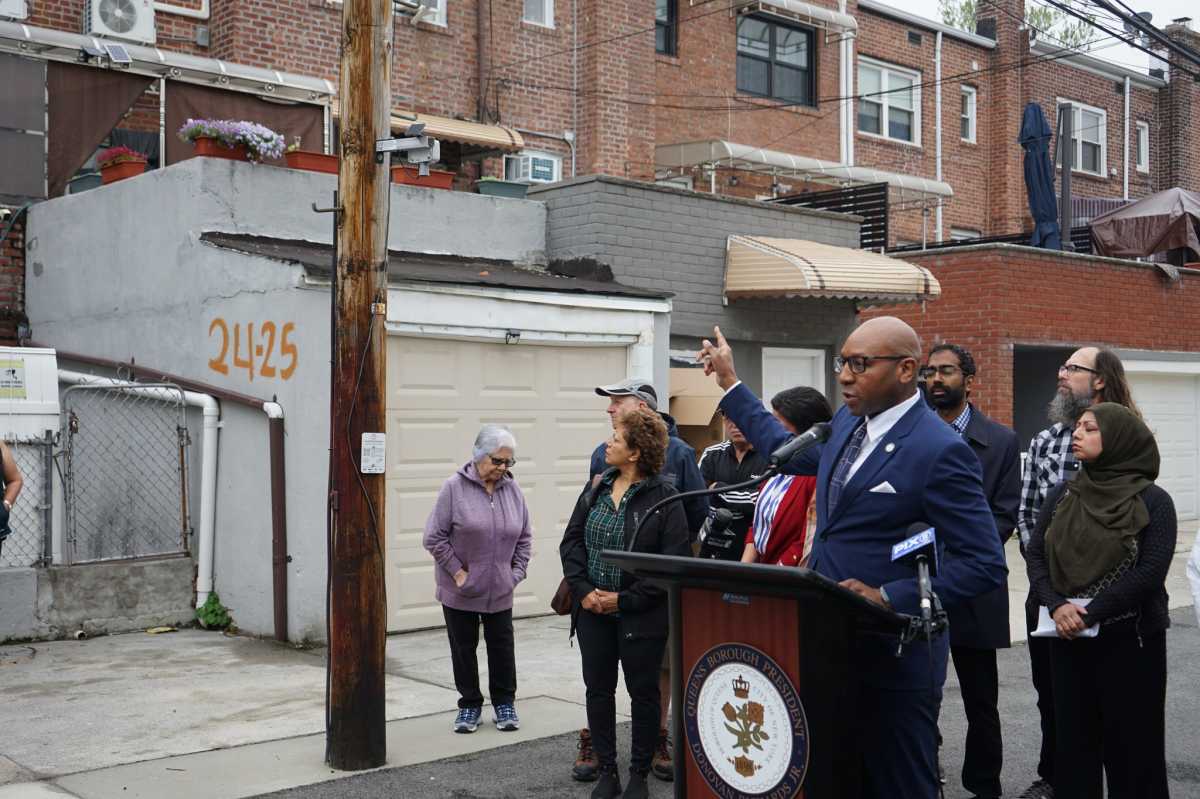
OUS has identified pollution sources and proposed solutions, such as deploying low-energy street sweepers, promoting zero-emission vehicle sales, and advancing energy conservation plans at city and regional levels.
The report also showcases investments in pedestrian and cyclist infrastructure, expansion of public green spaces, and the creation of hydroponic labs in schools across Queens.
It also highlights major energy transition projects like the Champlain Hudson Power Express, which will deliver renewable energy from Canada to a new converter station in Astoria by 2026, and the Renewable Ravenswood plan, which aims to transform the existing Ravenswood Generating Station into a clean energy hub connected to an offshore wind farm.
“There are no rights more fundamental to the health of our families than the rights to clean air and clean water,” the report reads. “But millions of residents across New York City, especially here in Queens, continue to bear the burden of pollution and other environmentally destructive crises.”

